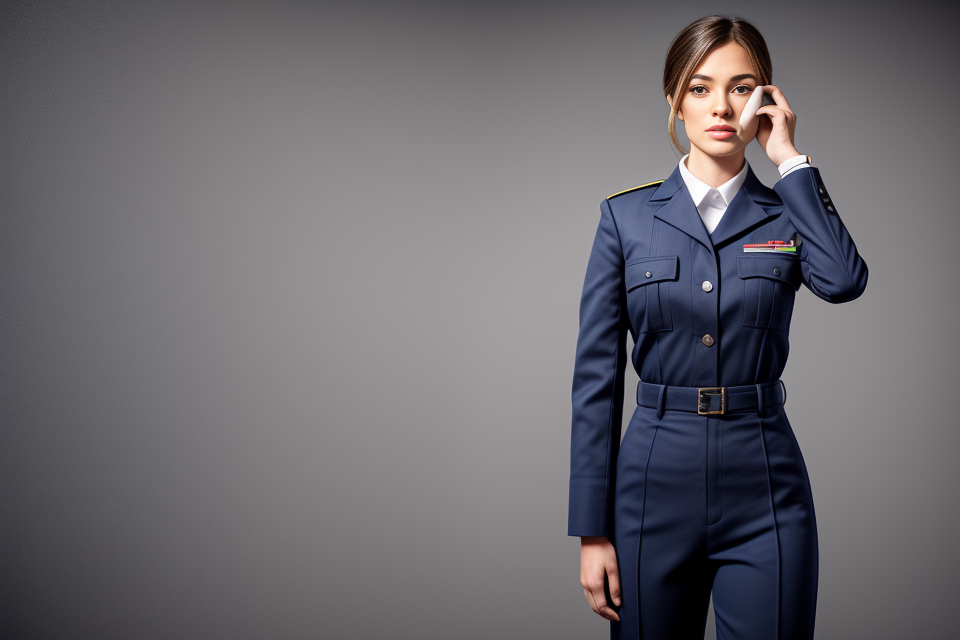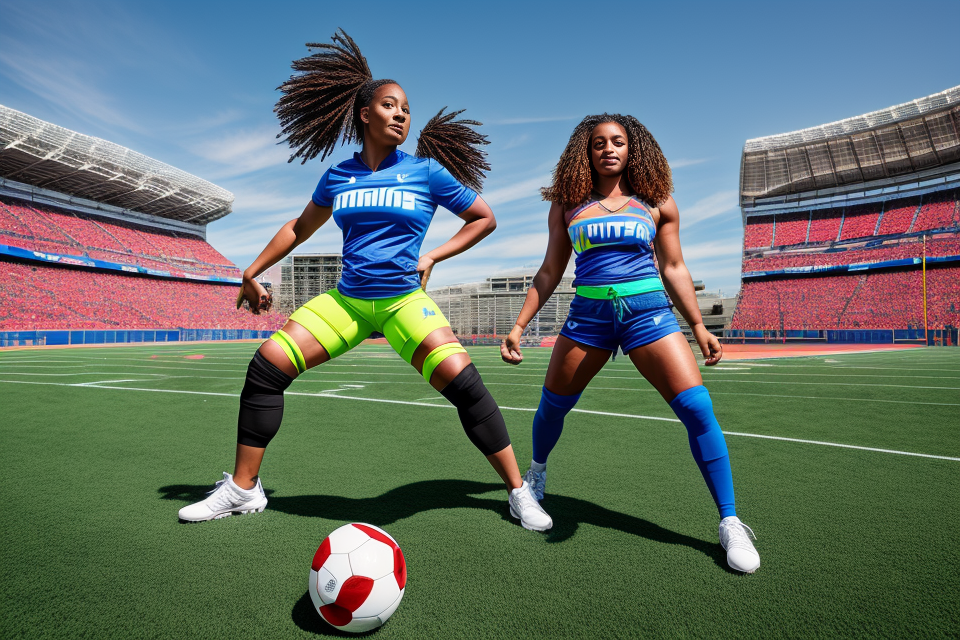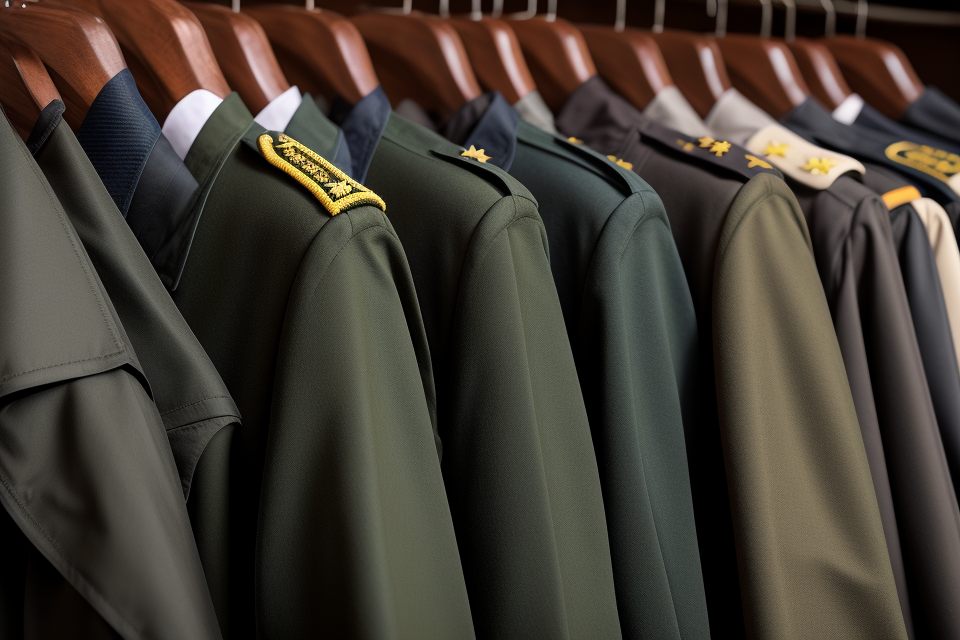
Uniforms are an essential part of any profession or institution, and the fabric used to make them plays a crucial role in their durability and performance. Choosing the right fabric for uniforms can be a daunting task, as it requires consideration of various factors such as comfort, strength, and resistance to wear and tear. In this article, we will explore the different types of fabrics commonly used for uniforms and their unique properties, helping you make an informed decision on which fabric is best suited for your needs. From rugged cotton to lightweight synthetics, we’ll take a closer look at the pros and cons of each option and provide expert tips on how to ensure your uniforms stand up to the test of time. So, let’s dive in and explore the world of uniform fabrics!
The type of fabric best for uniforms to ensure durability is a matter of personal preference and intended use. However, in general, materials such as cotton, polyester, and nylon are commonly used for uniforms due to their durability and resistance to wear and tear. Additionally, materials with a higher thread count and a tight weave tend to be more durable and long-lasting. Ultimately, the best fabric for a uniform will depend on the specific needs and requirements of the individual or organization purchasing the uniforms.
Factors to Consider When Choosing a Fabric for Uniforms
Durability
When choosing a fabric for uniforms, durability is a crucial factor to consider. The fabric should be able to withstand the wear and tear that comes with regular use, as well as the rigors of repeated washing and drying. Here are some factors to consider when evaluating the durability of a fabric for uniforms:
- Tensile strength: This refers to the amount of force required to break a piece of fabric. A fabric with high tensile strength is more durable and less likely to tear or rip, which is essential for uniforms that are subjected to regular wear and tear.
- Resistance to wear and tear: Uniforms are often subjected to a lot of wear and tear, especially if they are worn every day. The fabric should be able to withstand this type of use without showing signs of wear and tear, such as fraying, snagging, or pilling.
- Ability to withstand repeated washing and drying: Uniforms need to be washed regularly to maintain their appearance and hygiene. The fabric should be able to withstand the rigors of repeated washing and drying without losing its shape, color, or texture. This is especially important for uniforms that are worn by individuals who are exposed to body fluids or other hazardous materials.
In conclusion, when it comes to ensuring durability in uniform fabrics, it is essential to consider factors such as tensile strength, resistance to wear and tear, and the ability to withstand repeated washing and drying. These factors will help ensure that the uniforms remain in good condition and can be worn for an extended period, which is essential for businesses and organizations that require their employees to wear uniforms.
Comfort
When choosing a fabric for uniforms, comfort is an essential factor to consider. Uniforms are often worn for extended periods, and if they are not comfortable, they can cause discomfort and distraction. Here are some key aspects of comfort to consider when selecting a fabric for uniforms:
- Breathability: Breathability refers to the fabric’s ability to allow air to circulate through it. Uniforms that are worn for extended periods, such as those worn by athletes or in hot environments, need to be breathable to prevent overheating. Breathable fabrics, such as cotton and mesh, are ideal for uniforms that require this quality.
- Softness: Softness is another important aspect of comfort. Uniforms that are made from soft fabrics are more comfortable to wear, as they do not irritate the skin or cause discomfort. Soft fabrics, such as cotton and bamboo, are ideal for uniforms that require this quality.
- Moisture-wicking properties: Moisture-wicking properties refer to the fabric’s ability to draw moisture away from the body. Uniforms that are worn in hot and humid environments need to be moisture-wicking to prevent sweating and discomfort. Moisture-wicking fabrics, such as polyester and nylon, are ideal for uniforms that require this quality.
Overall, when choosing a fabric for uniforms, it is essential to consider the level of comfort required for the intended use. The right combination of breathability, softness, and moisture-wicking properties can make a significant difference in the comfort and performance of the wearer.
Appearance
When it comes to choosing the right fabric for uniforms, appearance is an important factor to consider. Here are some aspects of appearance that are worth taking into account:
- Color fastness: The ability of a fabric to retain its color over time is crucial for uniforms. Uniforms are often worn for extended periods, and they may be exposed to various conditions such as sweat, sunlight, and water. Fabrics with good color fastness are less likely to fade or lose their color, ensuring that the uniform looks professional and well-maintained.
- Finish and texture: The finish and texture of a fabric can have a significant impact on its appearance. For example, a fabric with a smooth finish may look more professional than one with a rough finish. Similarly, a fabric with a subtle texture may be more suitable for formal settings than one with a bold texture.
- Style and design options: Uniforms are often designed to project a specific image or brand identity. Therefore, it’s important to choose a fabric that can accommodate the desired style and design options. For example, some fabrics may be better suited for button-down shirts, while others may be more appropriate for dresses or skirts.
Overall, the appearance of a fabric can play a significant role in determining its suitability for uniforms. By considering factors such as color fastness, finish, texture, and style, you can ensure that the fabric you choose will meet the needs of your organization and provide a professional and well-maintained image.
Common Fabrics Used for Uniforms
Cotton
Cotton is a popular choice for uniforms due to its affordability, comfort, and breathability. However, it has some drawbacks that need to be considered.
- Pros:
- Affordable: Cotton is a relatively inexpensive fabric, making it an attractive option for businesses and organizations looking to save costs.
- Comfortable: Cotton is a soft and lightweight fabric that is comfortable to wear, even for long periods.
- Breathable: Cotton is a natural fabric that allows air to circulate, making it ideal for uniforms that will be worn in hot weather.
- Cons:
- Prone to wrinkling: Cotton is a delicate fabric that wrinkles easily, which can give it a disheveled appearance. This can be a problem for uniforms that require a neat and professional look.
- Not as durable as other fabrics: While cotton is a strong fabric, it is not as durable as some other fabrics, such as polyester or nylon. This means that cotton uniforms may not last as long and may need to be replaced more frequently.
Overall, cotton is a good choice for uniforms that do not require a high level of durability or a formal appearance. However, for uniforms that need to withstand heavy wear and tear or maintain a professional look, other fabrics may be more suitable.
Polyester
Polyester is a synthetic fabric that is commonly used in the manufacturing of uniforms due to its durability, wrinkle-resistance, and affordability. This fabric is made from polymers that are created through a chemical reaction, rather than through natural processes like cotton or wool.
Pros:
- Durability: Polyester is a strong and resilient fabric that can withstand frequent wear and tear, making it an ideal choice for uniforms that need to last long.
- Wrinkle-resistance: One of the most significant advantages of polyester is its ability to resist wrinkles, which makes it an excellent choice for uniforms that require a professional and polished appearance.
- Affordability: Polyester is an affordable fabric that is widely available, making it an excellent choice for organizations on a budget.
Cons:
- Can feel hot and sticky in warm weather: Polyester is a synthetic fabric that can retain heat, which can make it uncomfortable to wear in warm weather. It can also feel sticky to the touch, which can be unpleasant for some people.
- Not as comfortable as cotton: Polyester is a synthetic fabric that can feel less comfortable than natural fabrics like cotton. Some people may find that polyester uniforms are less breathable and more prone to causing skin irritation.
Nylon
Nylon is a synthetic fabric that is commonly used in the manufacture of uniforms. It is known for its lightweight, strong, and durable properties, making it an ideal choice for uniforms that need to withstand regular wear and tear.
- Lightweight: Nylon is a lightweight fabric, which makes it comfortable to wear for long periods of time. This is especially important for uniforms that are worn during physically demanding activities.
- Strong: Nylon is a strong fabric that can withstand a lot of wear and tear. It is resistant to tearing and fraying, which means that it can hold up well under heavy use.
-
Resistant to water and oil: Nylon is a water-repellent fabric that is also resistant to oil. This makes it an excellent choice for uniforms that are used in industries where employees are exposed to water or oil.
-
Expensive: Nylon can be more expensive than other fabrics, which may make it less accessible for some organizations.
- Can be itchy on the skin: Some people may find that nylon fabric is itchy on the skin, which can be uncomfortable to wear for extended periods of time.
Overall, nylon is a popular choice for uniforms due to its durability and resistance to water and oil. However, its high cost and potential for itchiness may be drawbacks for some organizations.
Poly-Cotton Blends
Poly-cotton blends are a popular choice for uniforms due to their affordability, comfort, and durability. These blends are made by combining polyester and cotton fibers, resulting in a fabric that combines the best qualities of both materials.
Pros:
- Affordable: Poly-cotton blends are typically less expensive than other fabrics, making them a popular choice for uniforms.
- Comfortable: The softness of cotton and the wrinkle-resistance of polyester make for a comfortable fabric that is easy to wear.
- Durable: The blend of fibers creates a fabric that is strong and long-lasting, making it ideal for uniforms that need to withstand regular wear and tear.
Cons:
- Can be less breathable than 100% cotton: The addition of polyester can make the fabric less breathable than 100% cotton, which may cause discomfort in hot weather conditions.
Performance Fabrics
Performance fabrics are a popular choice for uniforms due to their ability to provide both comfort and durability. These fabrics are designed to enhance the performance of the wearer by wicking moisture away from the body, drying quickly, and providing anti-microbial properties.
- Pros:
- Moisture-wicking: Performance fabrics are designed to move moisture away from the body, keeping the wearer dry and comfortable. This is especially beneficial for uniforms that are worn in hot and humid environments.
- Quick-drying: These fabrics are also designed to dry quickly, which is important for uniforms that are worn for extended periods of time. This can help prevent the growth of bacteria and odors, which can be a problem with fabrics that take longer to dry.
- Anti-microbial properties: Some performance fabrics are treated with anti-microbial agents that inhibit the growth of bacteria and fungi. This can help prevent odors and infections, which can be a problem with traditional fabrics.
- Cons:
- More expensive than traditional fabrics: Performance fabrics are often more expensive than traditional fabrics, which can be a concern for organizations with a limited budget.
- May not be suitable for all uniform styles: While performance fabrics are a great choice for many uniform styles, they may not be suitable for all types of uniforms. For example, they may not be appropriate for formal wear or uniforms that require a more traditional look.
Overall, performance fabrics are a great choice for uniforms that require durability, comfort, and functionality. However, it is important to consider the pros and cons of these fabrics when making a decision about which fabric to use for a particular uniform style.
Choosing the Right Fabric for Your Uniform Needs
Consider the End Use of the Uniform
When choosing the right fabric for your uniform needs, it is important to consider the end use of the uniform. The end use of the uniform will determine the level of durability required for the fabric. For example, police officers and security guards may require a more durable fabric than office workers.
- Durability requirements:
- Police officers and security guards:
- Need a fabric that can withstand constant wear and tear, as well as potential altercations.
- A heavy-duty fabric with high abrasion resistance is recommended.
- Office workers:
- May not require the same level of durability as police officers and security guards.
- A lightweight and comfortable fabric that is easy to clean and maintain is sufficient.
- Police officers and security guards:
By considering the end use of the uniform, you can ensure that the fabric you choose is appropriate for the job and will provide the necessary level of durability.
Evaluate Your Budget
When it comes to choosing the right fabric for your uniform needs, evaluating your budget is an important factor to consider. The cost of different fabrics can vary greatly, and some may be more expensive than others. However, it’s important to remember that the cost of a fabric may be justified by the benefits it offers.
One type of fabric that may be more expensive but offers benefits is performance fabrics. These fabrics are designed to be comfortable, durable, and functional, making them ideal for uniforms that need to withstand heavy wear and tear. Performance fabrics may also be breathable, moisture-wicking, and flame-resistant, making them a great choice for uniforms that need to meet specific safety standards.
On the other hand, basic fabrics such as cotton and polyester may be more affordable, but they may not offer the same level of durability and functionality as performance fabrics. While these fabrics may be suitable for some uniform needs, it’s important to consider the specific requirements of your uniform and choose a fabric that meets those needs.
Ultimately, evaluating your budget will help you determine what type of fabric is best for your uniform needs. While it may be tempting to choose the cheapest option available, it’s important to consider the long-term benefits of investing in a higher-quality fabric that will ensure the durability and functionality of your uniforms.
Take Advantage of Customization Options
When it comes to choosing the right fabric for your uniform needs, customization options can be a valuable asset. Many uniform suppliers offer the ability to customize the fabric type, style, and design of your uniform. By taking advantage of these options, you can ensure that your uniforms meet your specific requirements and are tailored to your needs.
Here are some reasons why you should consider taking advantage of customization options when choosing the fabric for your uniforms:
- Tailored Fit: Customizing the fabric type and style of your uniform can ensure a tailored fit that is comfortable and appropriate for your employees. This can help to improve their overall morale and productivity, as well as their professional appearance.
- Durability: Choosing a fabric that is specifically designed for durability can help to ensure that your uniforms last longer and require less frequent replacement. This can save you time and money in the long run.
- Style and Design: Customizing the design of your uniforms can help to reflect your brand’s image and identity. This can be especially important for businesses that rely on a strong brand image to attract and retain customers.
- Compliance: Depending on the industry you’re in, there may be specific compliance requirements for the fabric used in your uniforms. Customizing your uniforms to meet these requirements can help you avoid any legal issues or penalties.
Overall, taking advantage of customization options when choosing the fabric for your uniforms can help you ensure that your employees look and feel their best, while also meeting your specific requirements for durability, style, and compliance.
FAQs
1. What factors should be considered when choosing the best fabric for uniforms?
When choosing the best fabric for uniforms, several factors should be considered. Firstly, the fabric should be durable and long-lasting, able to withstand frequent wear and tear. Secondly, the fabric should be comfortable to wear, allowing for ease of movement and reducing the risk of discomfort or irritation. Thirdly, the fabric should be easy to care for, with simple washing and drying instructions to ensure that the uniforms remain clean and hygienic. Finally, the fabric should be affordable, providing the best value for money while still meeting the required standards.
2. What types of fabrics are commonly used for uniforms?
There are several types of fabrics that are commonly used for uniforms, each with its own unique benefits. Cotton is a popular choice due to its durability and comfort, while polyester is often used for its resistance to wrinkles and stains. Nylon is another popular option, known for its strength and water-resistant properties. Additionally, blends of these fabrics are often used to create a uniform that combines the benefits of each material.
3. How should uniforms be cared for to ensure they last longer?
To ensure that uniforms last longer, they should be cared for properly. This includes following the care instructions on the label, which may include washing and drying the uniforms in a specific way. Additionally, it is important to avoid exposing the uniforms to harsh chemicals or excessive heat, as this can damage the fabric and reduce its lifespan. Regular inspection of the uniforms can also help to identify any signs of wear or damage early on, allowing for repairs to be made before the issue becomes more serious.
4. Can certain fabrics be used for specific types of uniforms?
Certainly! Different types of uniforms may require specific types of fabrics to ensure both durability and functionality. For example, firefighter uniforms may require a flame-resistant fabric to ensure safety, while chef uniforms may require a breathable fabric to help keep them cool in the heat of the kitchen. It is important to choose a fabric that is appropriate for the specific type of uniform and the environment in which it will be used.
5. Are there any disadvantages to using certain types of fabrics for uniforms?
While there are many benefits to using certain types of fabrics for uniforms, there may also be some disadvantages to consider. For example, cotton uniforms may shrink or wrinkle easily, while polyester uniforms may feel less comfortable against the skin. Additionally, some fabrics may be more expensive than others, or may require special care that can be time-consuming or costly. It is important to weigh the pros and cons of each fabric type before making a final decision.


